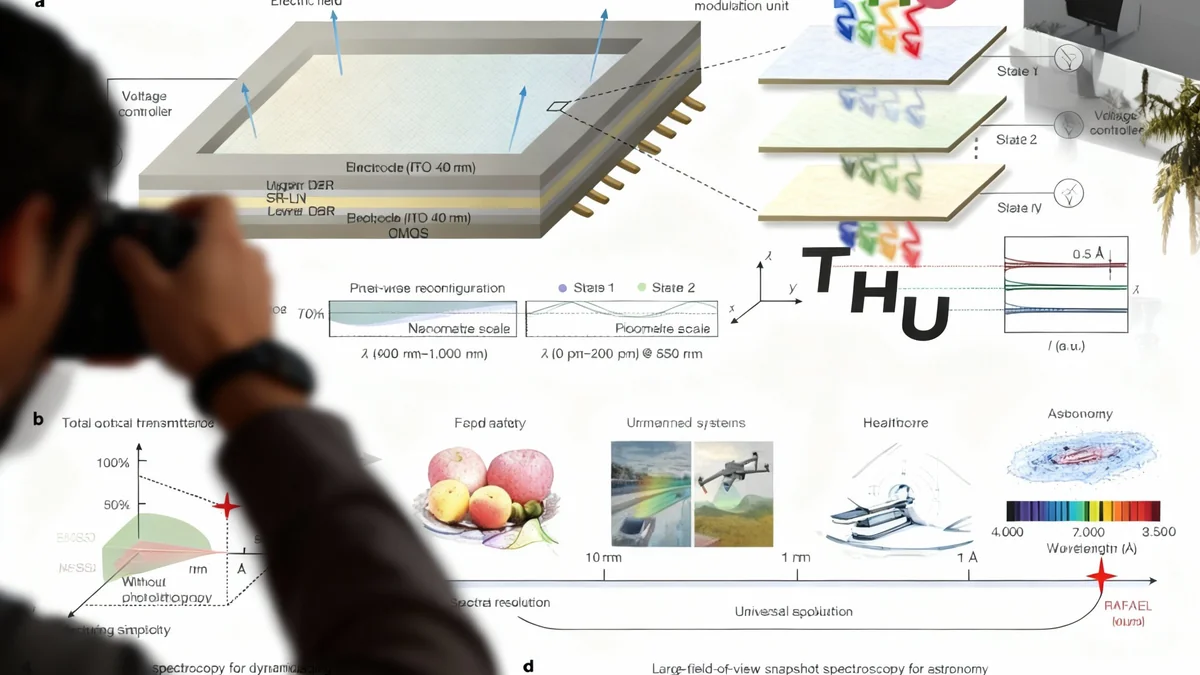Researchers have developed a new machine learning workflow called ZeoBind that significantly speeds up the process of creating zeolites, a class of crystalline materials used in catalysis and industrial filtration. The new method has already identified two novel organic molecules that successfully guide the formation of unique zeolites, demonstrating its potential to transform materials science.
This computational approach addresses a long-standing challenge in chemistry: efficiently navigating the vast number of potential molecules that can be used to synthesize these important materials. By making the tool and its data open-access, the team aims to accelerate innovation across various industries.
Key Takeaways
- A new machine learning tool named ZeoBind has been developed to streamline the synthesis of zeolites.
- The system analyzed nearly 500 million potential zeolite-molecule combinations, a scale previously unattainable.
- This process led to the successful experimental validation of two new organic structure-directing agents (OSDAs).
- The project's database, containing 2.3 million hypothetical molecules, is now open-access to encourage further research.
The Challenge in Creating Custom Zeolites
Zeolites are porous crystalline materials with a wide range of industrial applications, from refining petroleum to purifying water and air. Their specific properties are determined by their unique internal structure, which is formed during synthesis.
A critical component in this process is the use of Organic Structure-Directing Agents (OSDAs). These organic molecules act as templates, guiding the inorganic components to assemble into a specific zeolite framework. The choice of OSDA is crucial, as it directly influences the final properties of the material.
Traditional Methods of Discovery
Historically, discovering the right OSDA for a desired zeolite has been a slow and resource-intensive process. It often involved years of trial-and-error experimentation in the lab. Researchers had to synthesize and test countless organic molecules, with no guarantee of success, making it a major bottleneck in materials development.
The chemical space of potential OSDAs is immense, making it nearly impossible to explore exhaustively through physical experiments alone. This limitation has hindered the development of zeolites tailored for specific, advanced applications.
Introducing ZeoBind A Machine Learning Solution
To overcome these challenges, researchers created ZeoBind, a computational workflow designed to predict effective OSDAs. The system uses machine learning models trained on a massive dataset to understand the complex interactions between organic molecules and zeolite structures.
The foundation of ZeoBind is a predictive model built from hundreds of thousands of data points. This model learns to identify the key features of an organic molecule that make it a good template for a particular zeolite framework. This predictive power allows scientists to screen candidates digitally before committing to expensive and time-consuming lab work.
"By leveraging machine learning, we can explore the chemical landscape at a speed and scale that was previously unimaginable. ZeoBind allows us to identify promising candidates with much higher confidence, fundamentally changing our approach to material design."
The research team compiled an extensive library of 2.3 million hypothetical OSDA-like molecules derived from commercially available starting materials. This vast library serves as the search space for the ZeoBind algorithm.
From Prediction to Proven Success
The power of the ZeoBind workflow was demonstrated in a large-scale screening effort. The system evaluated nearly 500 million pairs of potential zeolite-molecule combinations to identify the most promising candidates for synthesis.
A Numbers Game
The ZeoBind project involved staggering numbers:
- 2.3 million hypothetical OSDA molecules created for the library.
- 500 million zeolite-molecule interactions computationally assessed.
- Two novel OSDAs were successfully synthesized and validated in the lab.
From this massive computational search, the team selected several high-potential OSDAs for experimental validation. The results were a significant success: two of the newly designed molecules were confirmed to effectively template the formation of zeolites with unique chemical compositions. This achievement validates the predictive accuracy of the ZeoBind model and its practical utility in a laboratory setting.
The Importance of Open Access
A key aspect of this project is its commitment to transparency and collaboration. The researchers have made the ZeoBind workflow and its extensive data library open-access. This decision is intended to democratize the tools for OSDA design and encourage other scientists to build upon their work.
By providing open access, the team hopes to foster a community-driven effort to accelerate zeolite research. This could lead to a rapid increase in the discovery of new materials with enhanced performance for various industrial and environmental applications.
Broader Implications for Science and Industry
The development of ZeoBind represents a significant step forward for materials science. The ability to design zeolites with specific properties on demand has profound implications for numerous sectors.
Industries that could benefit from custom-designed zeolites include:
- Petrochemicals: More efficient catalysts for refining crude oil and producing fuels and plastics.
- Environmental Remediation: Advanced adsorbents for removing pollutants from water and air.
- Renewable Energy: Materials that can improve processes for creating biofuels or storing hydrogen.
- Gas Separation: More effective molecular sieves for capturing carbon dioxide or separating industrial gases.
This work also highlights the growing role of artificial intelligence and machine learning in scientific discovery. By integrating computational modeling with traditional experimental chemistry, researchers can tackle complex problems more efficiently, reducing costs and accelerating the pace of innovation.
As tools like ZeoBind become more sophisticated, the era of designing materials from the ground up to meet specific functional requirements is moving closer to reality. The comprehensive mapping of the zeolite-template chemical space is just the beginning of a new, data-driven chapter in chemistry.





